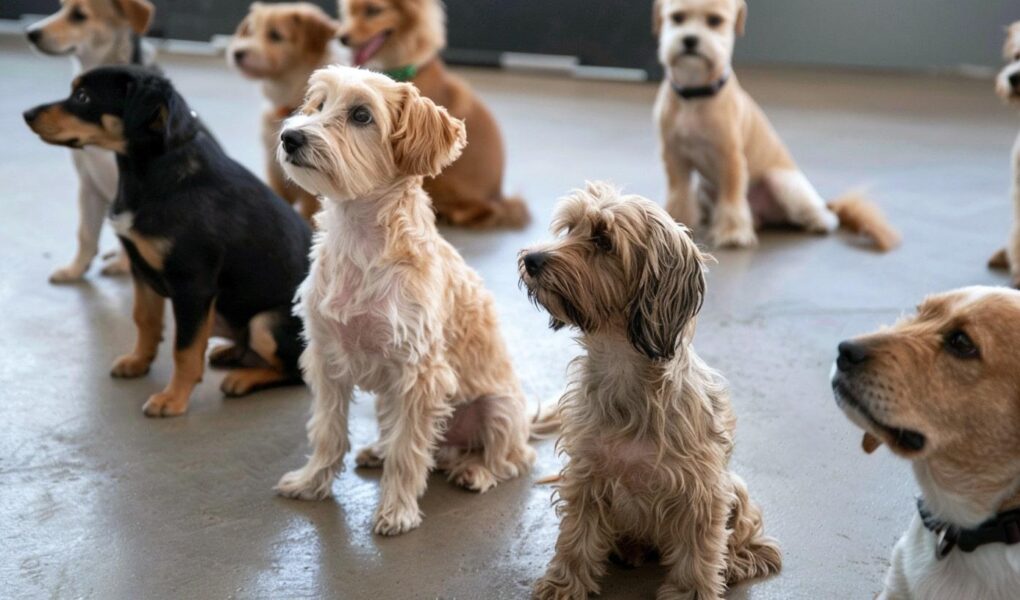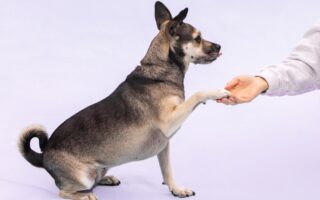Bringing a new puppy into your home is an exciting adventure filled with boundless energy and playful moments. Yet, alongside the joy of wagging tails and soft furry cuddles comes the important task of training. Just like a sculptor shapes a block of marble into a masterpiece, training your puppy lays the foundation for a well-mannered companion. In this article, we will explore essential techniques and strategies to guide you through the stages of puppy training, helping you cultivate a harmonious relationship built on trust, respect, and understanding. Whether you are a first-time dog owner or a seasoned pro, preparing for the journey ahead can ensure that your new furry friend grows into a cherished member of your family. So, leash up and let’s embark on this rewarding journey together!
Table of Contents
- Choosing the Right Approaches for Puppy Training Success
- Establishing a Routine: The Key to Consistent Learning
- Socialization Strategies: Expanding Your Puppy’s World
- Positive Reinforcement Techniques for Lasting Behaviors
- Q&A
- To Wrap It Up
Choosing the Right Approaches for Puppy Training Success
When it comes to training a new puppy, selecting the right approach can make all the difference in ensuring a successful and harmonious relationship between you and your furry friend. Different methods resonate with different dogs, so it’s essential to tailor your training to the individual needs of your puppy. Positive reinforcement is a popular and effective method, utilizing treats, praise, and playtime to encourage good behavior. Alternatively, some owners may find success with clicker training, where a click sound marks the desired behavior, followed by a reward. Both approaches promote a positive training environment and help build trust.
Another important factor is consistency in training techniques and commands. Puppies thrive on routines, and understanding their learning styles can help you create an effective training plan. Here are a few strategies to consider:
- Set Clear Expectations: Use simple, consistent commands across all family members.
- Practice Short Sessions: Keep training sessions brief to maintain your puppy’s attention.
- Incorporate Socialization: Expose your puppy to new experiences, people, and other animals.
Lastly, it can be beneficial to reflect on your training journey through a structured system. The following table outlines common training goals and their corresponding time frames:
| Training Goal | Time Frame |
|---|---|
| House Training | 4-6 months |
| Basic Commands (Sit, Stay, Come) | 3-4 weeks |
| Leash Training | 2-3 weeks |
Establishing a Routine: The Key to Consistent Learning
Creating a structured daily schedule is essential for effective puppy training. Consistency helps your furry friend understand what is expected and encourages better behavior. Consider the following elements to make your training routine successful:
- Feeding Times: Stick to regular meal times to establish a sense of security.
- Potty Breaks: Take your puppy out after meals, playtime, and naps to reinforce good habits.
- Training Sessions: Keep them short and fun—aim for 5-10 minutes at a time to maintain focus.
- Play and Socialization: Include time for interactive play and interactions with other dogs and people.
To further enhance your training efforts, tracking progress can provide invaluable insights. Below is a simple table to help you monitor daily activities and accomplishments:
| Day | Checkpoint | Notes |
|---|---|---|
| 1 | Sit Command | Responded well to treats. |
| 2 | Potty Training | No accidents inside. |
| 3 | Socialization | Met with another puppy. |
Socialization Strategies: Expanding Your Puppy’s World
To ensure your puppy develops into a well-adjusted adult dog, it’s essential to introduce them to a variety of experiences and environments. Begin by carefully curating socialization opportunities that cater to their age and comfort level. A few effective strategies include:
- Playdates: Finding other vaccinated puppies or friendly adult dogs allows your puppy to learn important social cues.
- Group Classes: Enroll in puppy training classes where they can interact with peers and learn basic commands in a controlled setting.
- Public Outings: Regular visits to parks, pet-friendly shops, or outdoor cafés expose them to different sights, sounds, and people.
Maintaining a positive atmosphere during these outings is crucial. Reward your puppy for calm behavior and gently redirect any signs of fear or aggression. Keeping track of your puppy’s experiences can help you identify what they enjoy or find challenging. Consider using the following table to monitor their socialization journey:
| Activity | Location | Reactions |
|---|---|---|
| Playdate | Friend’s Yard | Happy, Playful |
| Puppy Class | Local Training Facility | Cautious but Engaged |
| Park Visit | Community Park | Excited, Curious |
Remember, the goal of socialization is not just to expose your puppy to as many experiences as possible, but to ensure they learn to navigate these situations with confidence and calmness. Be patient, encouraging, and attentive, allowing your puppy to grow into a sociable and hardy companion.
Positive Reinforcement Techniques for Lasting Behaviors
One of the most effective methods to encourage your new puppy to learn and adopt positive behaviors is through positive reinforcement. This technique involves rewarding your puppy with treats, praise, or playtime whenever they exhibit the desired behaviors. For example, when your puppy successfully sits on command, a small treat followed by enthusiastic verbal praise can reinforce that action. The goal is to make the association between the behavior and the reward strong, making your puppy more likely to repeat it in the future. Consistency is key; with time, your puppy will begin to understand what actions result in positive outcomes.
To enhance the learning experience, you might also consider incorporating a structured reward system. Below is a simple way to track your puppy’s progress using a table:
| Behavior | Reward | Frequency |
|---|---|---|
| Sitting | Small Treat | After Every Successful Sit |
| Walking on Leash | Praise and Playtime | During Every Walk |
| House Training | Favorite Toy | Each Time Outside |
Using this table as a reference, you can maintain consistency in your training approach. Be sure to adjust the frequency and types of rewards based on your puppy’s progress and responsiveness. Over time, with patience and persistence, you’ll find that your puppy not only learns commands but also forms positive habits that will last a lifetime.
Q&A
Q: What is the first step in training a new puppy?
A: The very first step in training a new puppy is to establish a bond of trust and friendship. Begin by creating a safe, welcoming environment that allows your puppy to feel secure. Each interaction should be gentle, positive, and filled with encouragement. This foundation sets the stage for effective training.
Q: How long should training sessions be with a new puppy?
A: Puppies have short attention spans, so keep training sessions to about 5 to 10 minutes, focusing on one command or behavior at a time. Frequent, short sessions are more effective than longer ones, helping your puppy stay engaged and eager to learn.
Q: What basic commands should I teach my puppy first?
A: Start with foundational commands such as “sit,” “stay,” “come,” and “lie down.” These commands help your puppy understand basic obedience and facilitate better communication between the two of you. Adding commands that promote good manners, like “leave it” and “heel,” can also be beneficial as you progress.
Q: How important is positive reinforcement in training?
A: Positive reinforcement is key to successful puppy training. Reward your puppy with treats, praise, or playtime when they perform a desired behavior. This approach encourages repetition of good behaviors while building a positive association between training and rewards.
Q: What should I do if my puppy isn’t responding to training?
A: If your puppy isn’t responding as you’d like, assess the situation. Consider factors such as distractions in the environment, your puppy’s energy levels, or potential health issues. It may help to reduce distractions, try a different training method, or consult with a professional trainer for guidance.
Q: Is it normal for puppies to have accidents during training?
A: Yes, it is perfectly normal for puppies to have accidents as they learn proper house training. Accidents are part of the process, so remain patient and avoid punishment. Instead, focus on guiding your puppy to the appropriate bathroom area, and celebrate their successes in doing so.
Q: How can I socialize my puppy effectively?
A: Socialization involves exposing your puppy to various environments, people, and animals in a safe and controlled manner. Start early, ideally between 3 and 14 weeks of age, and introduce them to new experiences gradually. Positive experiences during this critical period can shape their behavior for life.
Q: When should I consider enrolling my puppy in a training class?
A: Enrolling in a training class can be a great next step once your puppy is about 8 weeks old. Look for classes that focus on socialization and basic obedience. Group classes not only offer structured training but also provide invaluable socialization opportunities with other puppies and people.
Q: How do I know if I’m successfully training my puppy?
A: Success in puppy training can be assessed by observing your puppy’s behavior. Are they responding to commands? Are they more confident in social situations? Are they demonstrating improved manners at home? If so, you’re on the right track. Remember, training is an ongoing process that evolves as your puppy grows.
Q: What should I remember about patience during the training process?
A: Patience is a virtue when training a puppy. Progress may seem slow at times, but each small victory counts. Celebrate those victories, stay committed, and remember that building a strong relationship with your puppy is just as important as teaching commands. The journey is just as rewarding as the destination!
To Wrap It Up
As we wrap up our journey through the essential steps of training a new puppy, remember that patience and consistency are your best allies. Each wag of that tiny tail and curious tilt of the head signals a learning opportunity, forging a bond that goes beyond commands and rewards. Embrace the messiness of those early days—it’s all a part of shaping a lifelong companion. The lessons learned today will not only mold your puppy into a well-mannered dog, but they will also create cherished memories along the way. So, equip yourself with love, understanding, and a sprinkle of humor. Your adventure together has just begun, and every day brings new discoveries and shared joys. Happy training!



